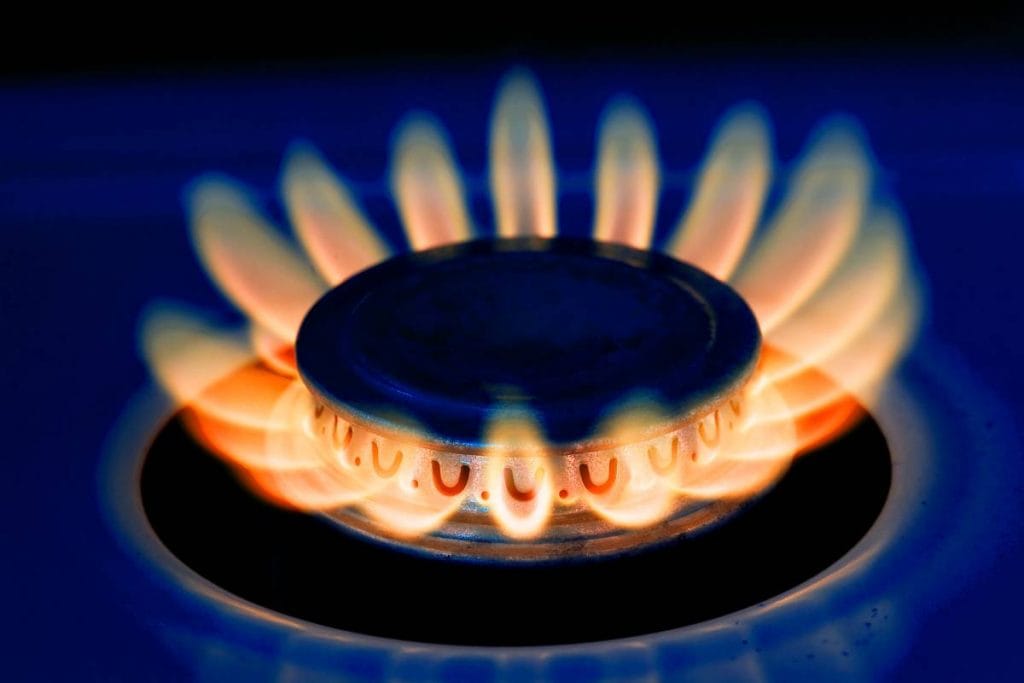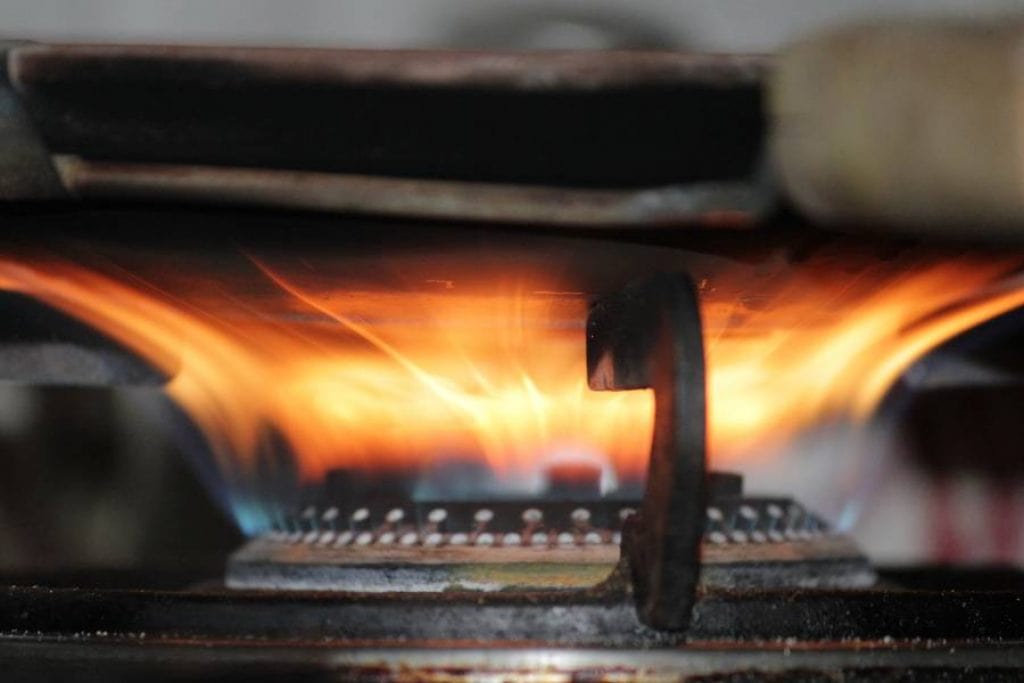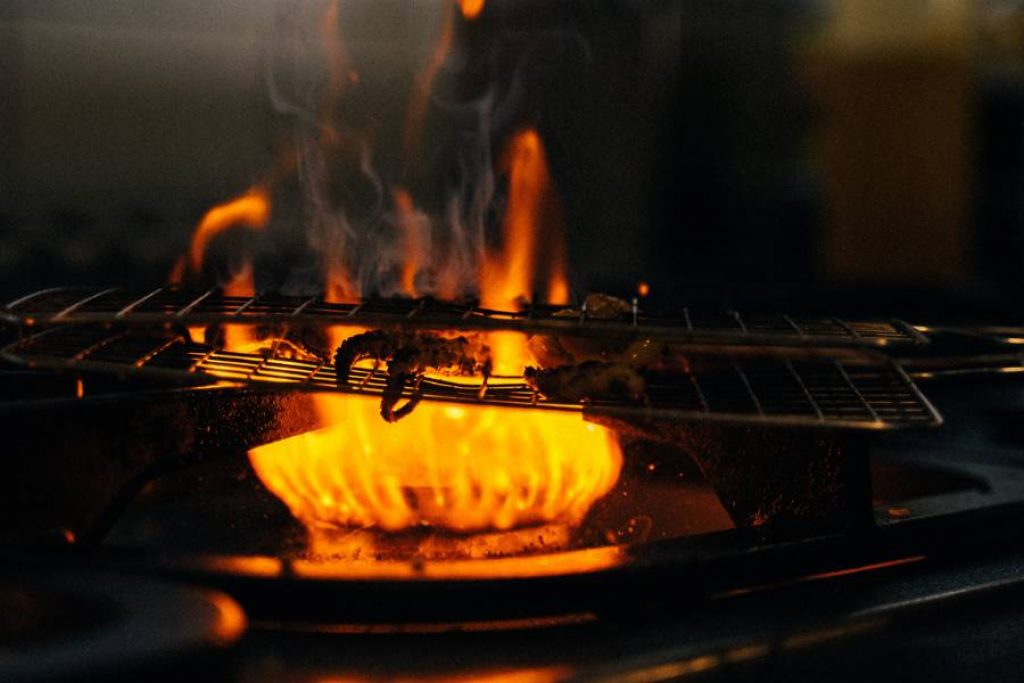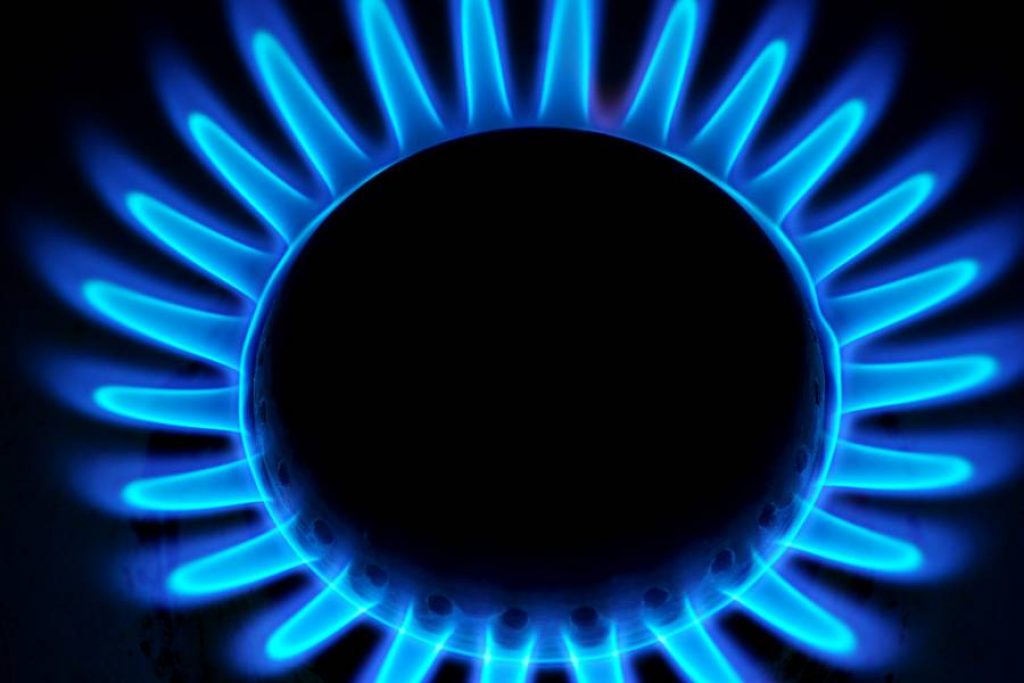Most modern kitchens have branded gas stoves as essential appliances. While gas stoves are convenient to use, it makes sense to stay abreast regarding potential hazards. Typically, a gas stove running on propane or methane gives you a blue flame. Do you recall noticing a yellow flame or a blue flame with yellow tips?
In case you do, there might be a potential safety hazard looming around your kitchen. A yellow flame on your gas stove isn’t a good sign. In this article, I have discussed what yellow flame means for you, the associated risks, and what you can do about it.
To give you a brief idea, a yellow flame on your gas stove points to a possible chance of carbon monoxide generation. Therefore, if you notice the flame’s color turning yellow, inspect the stove. In case you are an amateur, call in an expert for professional support.

What Does Yellow Flame On Gas Stoves Mean?
Seeing a yellow flame on your gas stove tends to be alarming. It implies that the fuel combustion is not complete, and there’s a dearth of oxygen in the combustion chamber. Incomplete combustion of the fuel can lead to carbon monoxide poisoning.
Besides, when you have a properly burning blue flame, the gas stove flame temperature reaches almost 2000 degrees C. However, this temperature is just around 800 to 1000 degrees C with an yellow flame. Cooking your dishes on a yellow flame would take much longer than usual. Besides, it can impact the quality of the food.
Moreover, when incomplete combustion of fuel takes place, a lot of fuel escapes unburnt. This ultimately leads to the loss of propane gas, which goes wasted.
At the end of the month, you would find staggeringly high energy bills. Therefore, you need to refill your fuel tank more frequently in case the gas burner has a yellow flame.
A yellow flame isn’t a good sign for your kitchen. Apart from causing health hazards in the form of carbon monoxide, it can also lead to damage of your utensils. Always choose branded gas stoves to prevent any hazards in your kitchen.
In the end, a lot depends on how you maintain your stove or clean the spills. Still, a high-quality gas stove brings you the liberty to clean and adjust it with more flexibility.

What Causes A Yellow Flame On Gas Stove?
Now that you know that a yellow flame isn’t what you should expect in your kitchen, let’s find out what causes them to appear on your gas stove.
Food And Oil Spills
When was the last time you split milk, oil, grease, or gravy on your gas stove? Did you care to clean the burner immediately?
Well, this is something most households tend to ignore. You must have noticed the presence of small holes in your gas burner. These holes are responsible for the passage or adequate air for combustion.
With food and oil spills on the gas stove, the vents on gas burners develop clogs. This prevents the burner from delivering its service to its full potential. The residues from fatty food accumulate on the burner and interfere with the usual process of cooking.
Until the fuel receives the right amount of oxygen, it won’t combust completely, resulting in yellow flame generation. More improper combustion can even result to orange flames or sometimes red flames on your gas stove.
You might also notice smoke coming out of the burner, which shouldn’t normally happen. Naturally, the clog deprives the burner of an adequate amount of air, which leads to incomplete combustion.
Sometimes, the food particles or spilled liquid on the gas stove burns and releases a radiant yellow glow. In case you take your gas stove outdoors for camping, make sure to clean the gas burner properly after you get back.
Low Fuel Supply
Have you inspected the level of fuel you have in your tank? Well, if oil spills aren’t the reason for the yellow flame on your gas stove, you might be low on propane or natural gas. To keep the flame properly burning, you need to ensure an adequate supply of LPG or PNG.
When the gas stove runs out of propane, the flame tends to suffocate. If this happens, you won’t have adequate heat to cook your food. This can mess up your party or camp and give you a yellow flame.
Low Air Supply
In case you are cooking in a closed environment, the lack of adequate air supply can also cause a yellow flame. As I mentioned earlier, the right proportion of fuel and air mixture is necessary to ensure complete combustion. In case you are low on air supply, or the clogs in the gas burner prevent air from entering it, you would get a yellow flame.
Let’s check out the ideal air-to-gas ratios to give you a better idea.
- If you are using natural gas for cooking, the gas ratio between air and natural gas should be 10:1.
- For LPG gases, this ratio is higher. So, if you are using propane, the air-to-gas ratio should be 24:1.
- For butane, the air-to-gas ratio should be 31:1.
Therefore, fuel combustion remains incomplete if a low air supply disrupts this ratio. In these situations, you would notice a yellow flame. While yellow flame often indicates low fuel supply, a green flame is generated by excessive fuel levels with low oxygen levels. Clogged gas burners and pipelines may also deprive the system of the necessary amount of air.
Does Yellow Flame Indicate Carbon Monoxide Generation?
Yes, a yellow flame indicates the generation of carbon monoxide.
As a thumb rule, the color of your gas flame should be close to purple or blue. So, if you find colors that are close to red, such as yellow or orange, you need to take guard against carbon monoxide poisoning.
Only when the right amount of oxygen is available, you can expect full combustion to take place. This process releases only carbon dioxide, and no carbon monoxide is produced during the normal combustion process.
As byproducts, heat and water are generated during combustion. This gas is devoid of any color or odor, which makes it extremely difficult to detect the same.

How To Fix The Yellow Flame On Gas Stove?
Clean The Burners
To ensure proper combustion, you need clean burners. Do away with food or liquid spills immediately to keep the burners in good shape. Besides, you always have the provision of hiring an expert to get the accessories cleaned. This ensures that you won’t end up damaging the valves or other sensitive components.
Check Fuel Leaks
In case you regularly clean the burners and have adequate ventilation around your kitchen, a leak in the gas line or fuel tank might be the culprit. Firstly, check out the gas lines delivering fuel to your home. However, if you continue to see a yellow flame after refueling your tank, hire a professional to detect a possible gas leak.
Ensure Proper Air Supply
Make sure your kitchen has proper ventilation around it. Keep the doors, windows, and other inlets open. This will allow adequate air to get into the space and support complete combustion to generate blue flames like in the following picture.

More Practical Tips
Any appliance at your home requires proper upkeep. Your gas stove isn’t an exception. If you are comfortable with DIY cleaning, you would need supplies like lemon juice, vinegar, and dish soap. Protect your hands using a pair of gloves. Rubbing the metal surface and leaving the cleaning agent for some time would loosen the dirt particles.
Next, use warm water to wash off the debris. Pay attention to the small holes in the burner when you remove the debris. They might get stuck in the holes. Use a toothbrush to clean these holes out.


I am seeing yellow tips on normal blue flame on the gas stove. Is it an abnormality?
Yes. It appears to be improper combustion. Before the yellow flame spreads, get it right by a technician.
So who do you call? The gas stove repair or the propane folks? Suddenly all four burners on my stove are completely yellow?
It is always better to call the stove repair technician to fix the yellow flame.